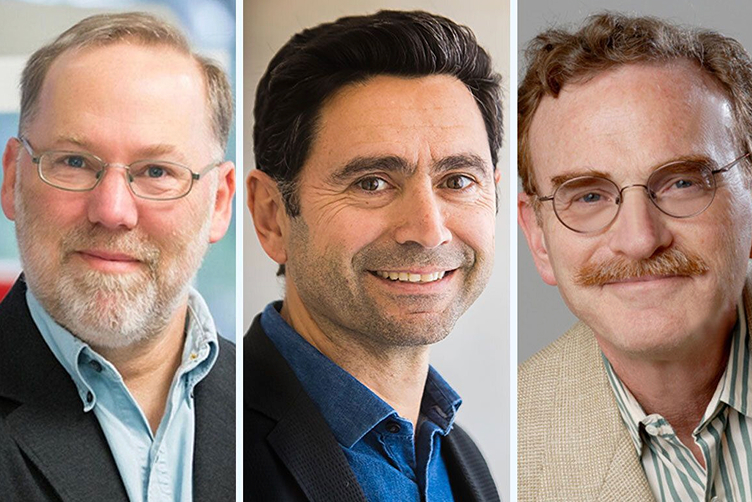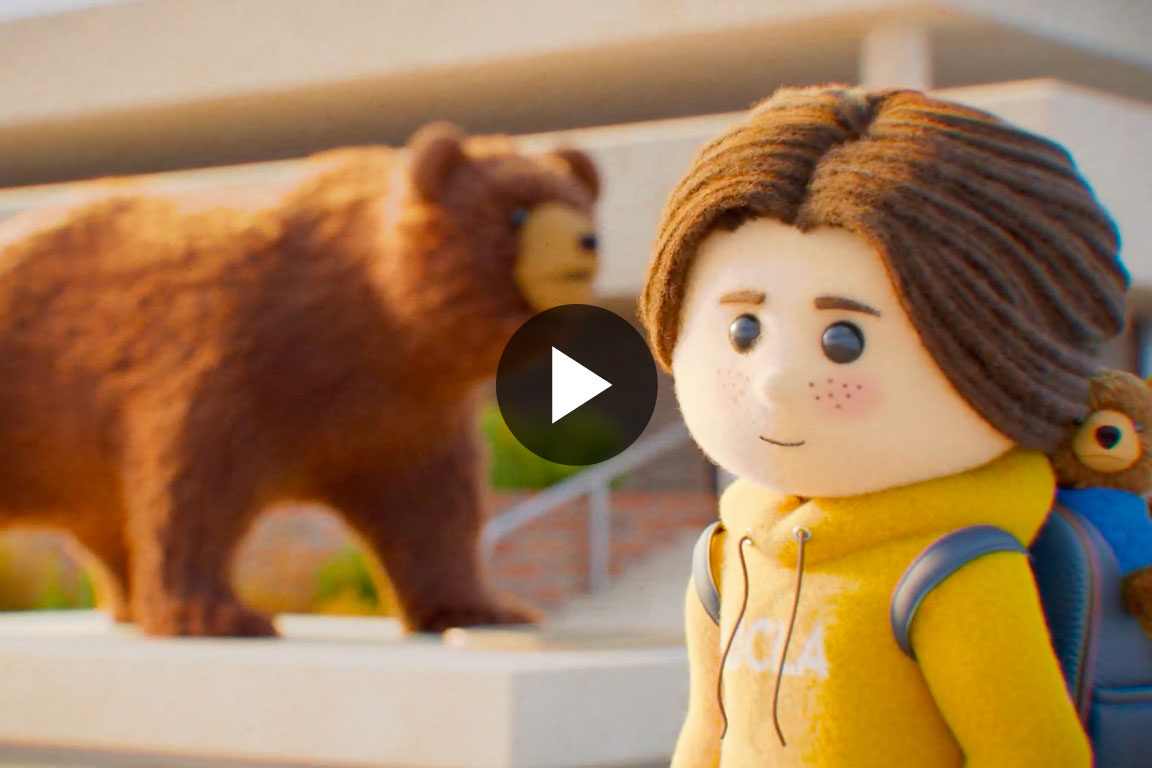
Research Powers Progress
What we discover and create at UCLA — with the help and support of federal grants — goes far beyond the walls of our labs and classrooms. Our life-saving and life-changing research benefits real people across America in transformative ways.
At UCLA, research is fueling breakthroughs that shape a brighter future. From developing new treatments that save lives, to advancing technologies that transform daily living, to exploring the mysteries of the universe, our investigators are driving discoveries that benefit people everywhere.
Each study carries the potential to improve health, strengthen communities, and expand knowledge in ways that touch us all. With sustained support, UCLA researchers continue to turn bold ideas into real-world impact—creating hope, opportunity, and progress for generations to come.
How Nobel Prize-winning Bruins changed the world
The Nobel Prize recognizes the world’s most celebrated innovators. Winners form a select group of leaders whose discoveries have left a lasting mark on humanity – and that group includes nine UCLA alumni.
-
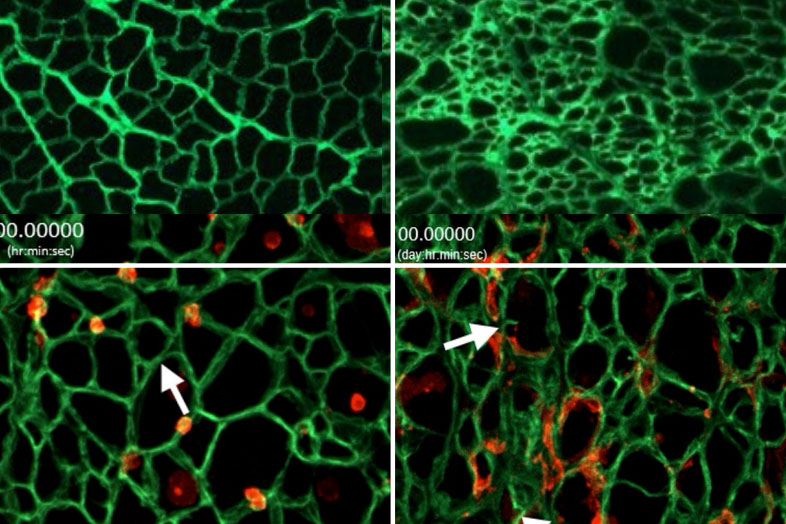
Treating muscular dystrophy
Advancing muscular dystrophy treatment by identifying sarcospan, a protein essential for stabilizing muscle cell membranes. Through the startup Pagoda Bio, they are developing gene-based and pharmaceutical therapies designed to reinforce muscle resilience and slow disease progression.
-
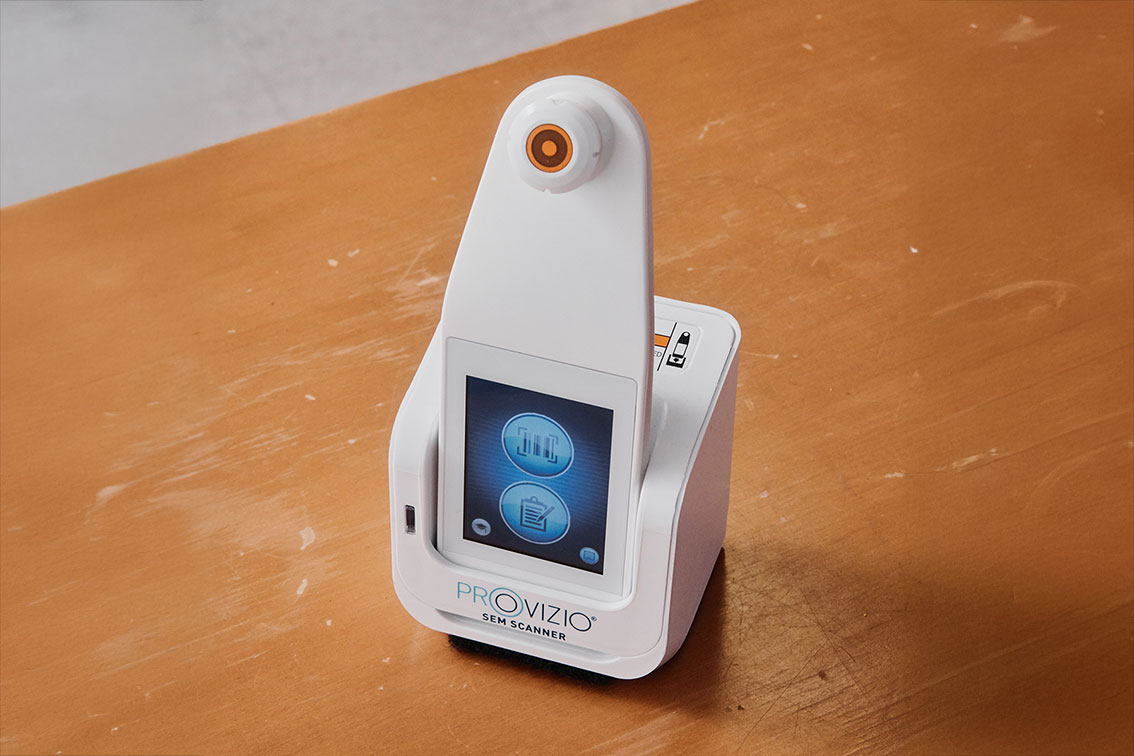
How UCLA’s Barbara Bates-Jensen revolutionized wound care
Pressure injuries are all too common in hospitals, an early indicator of serious issues. UCLA School of Nursing's Barbra Bates-Jensen helped create a fast, reliable device that can detect them in time to head off danger - and landed on Time magazine's list of best inventions.
-

Making medicine affordable
In recent years, revolutionary advances in medicine have helped address some of the most pressing challenges to human health. But not everyone can afford these lifesaving treatments. Osvaldo Gutierrez, a UCLA professor of chemistry and biochemistry, has set out to change that.
-
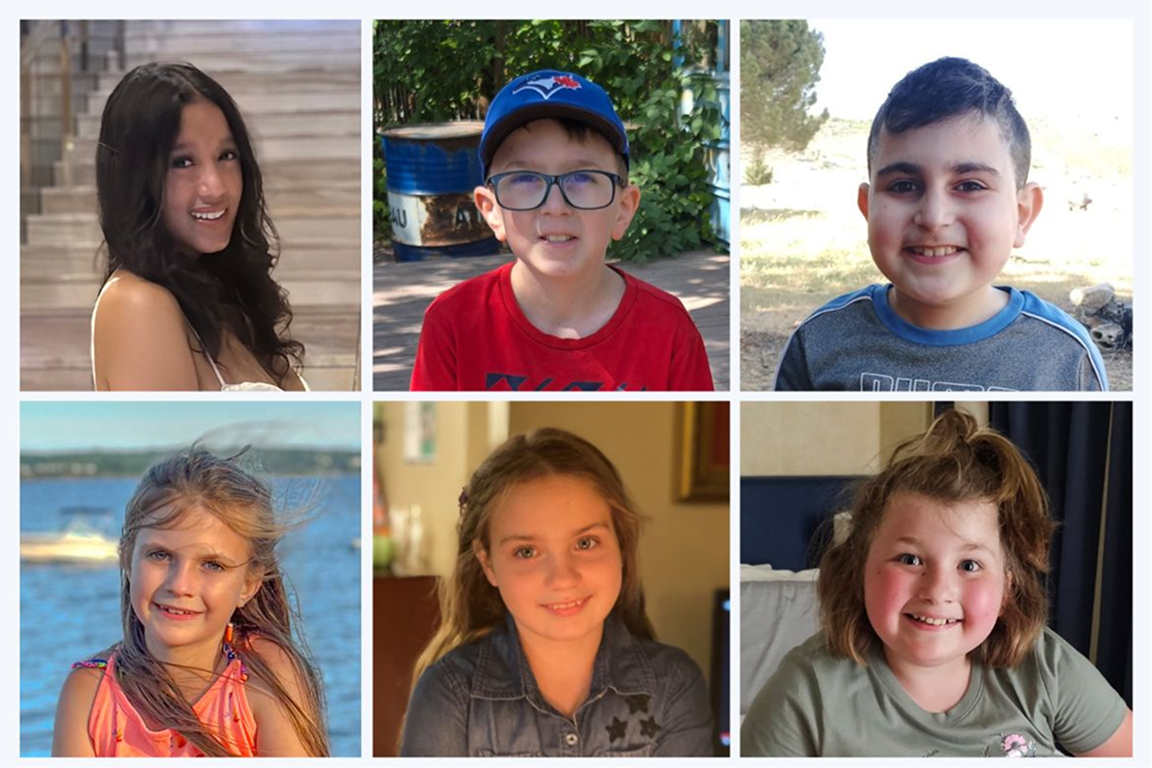
Giving children with immunodeficiency a chance to lead a normal life
For children with the rare condition ADA-SCID, day-to-day activities like going to school or playing with friends can lead to dangerous, life-threatening infections. If untreated, ADA-SCID can be fatal within the first two years of life. A blood stem cell gene therapy co-developed by UCLA’s Dr. Donald Kohn restored immune function in 59 of 62 children with ADA-SCID, with no serious complications reported.
-
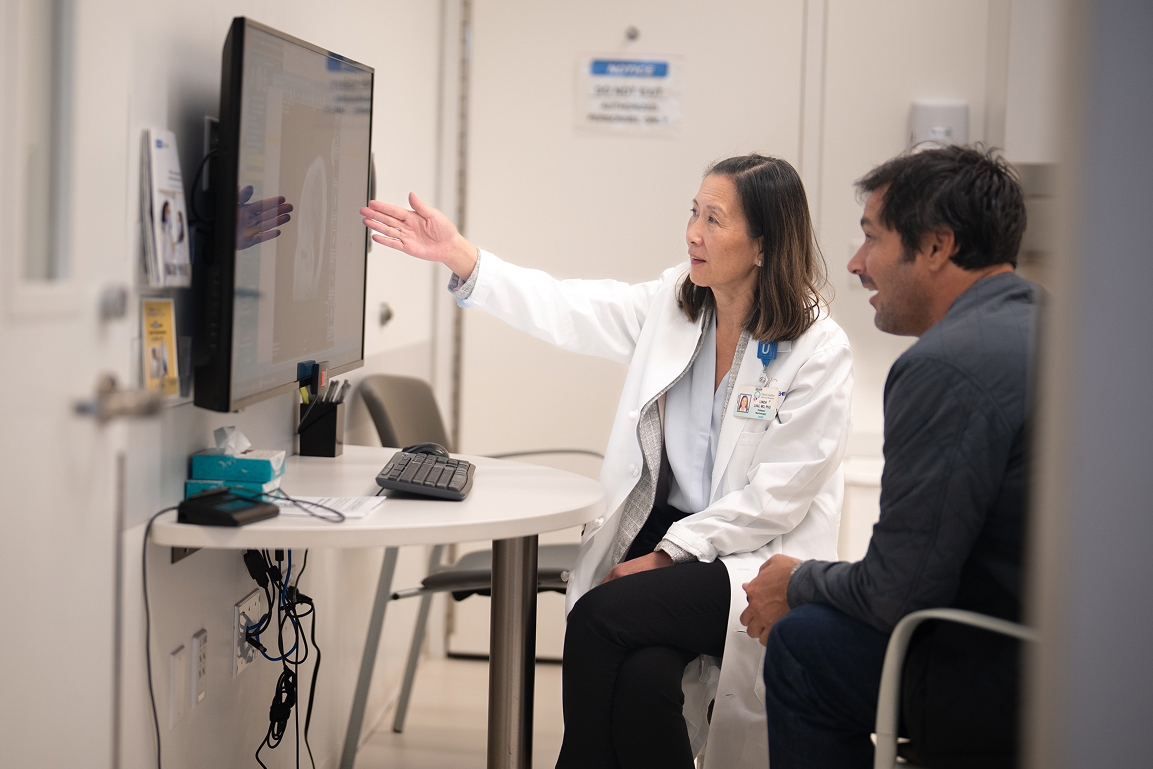
Beating brain cancer through vaccines and research
Across the university, surgeons and scientists are rethinking how to fight brain cancers, particularly glioblastoma, the most aggressive and deadly form of brain cancer. Among them are Linda Liau and Aparna Bhaduri, two researchers at UCLA Health Jonsson Comprehensive Cancer Center leading bold new approaches.
-
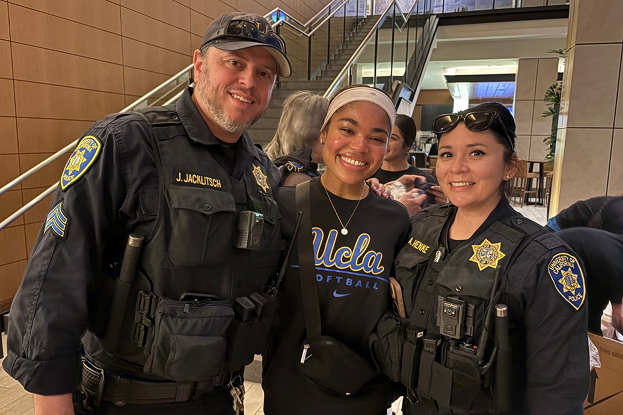
How Andrea Ghez unveiled the secrets of the stars
When world-renowned UCLA astrophysicist Andrea Ghez set out to map the heart of our galaxy, skeptics told her it couldn’t be done. Today she stands among science’s elite: a 2020 Nobel laureate — just the fourth woman ever awarded the prize in physics — for her pioneering discovery of the supermassive black hole at the center of the Milky Way.
-
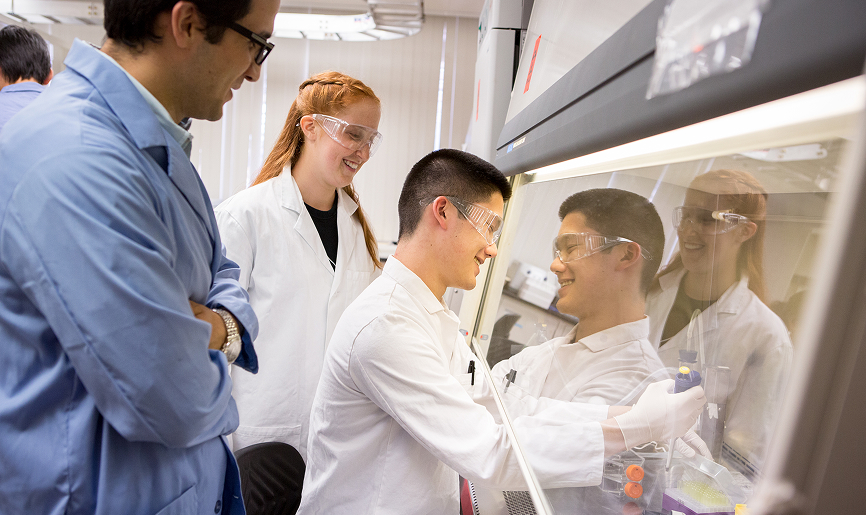
MRIs, Mozart and the wonders of mathematics
If you’ve had an MRI in recent years, you have UCLA mathematician and Fields Medal winner Terence Tao to thank for the technology. His foundational work in compressed sensing, conducted with Stanford professor Emmanuel Candès, paved the way for clinical techniques that use complex algorithms to create amazingly precise images from a tiny amount of data — cutting down the time and cost of the process and expanding its availability.
-

Saving hearts, one machine at a time
When a patient's heart or lungs fail, time becomes the ultimate enemy. For Dr. Abbas Ardehali, Director of the Heart, Lung and Heart-Lung Transplant Programs at UCLA's David Geffen School of Medicine, that race against time has defined decades of groundbreaking research and innovation.
-
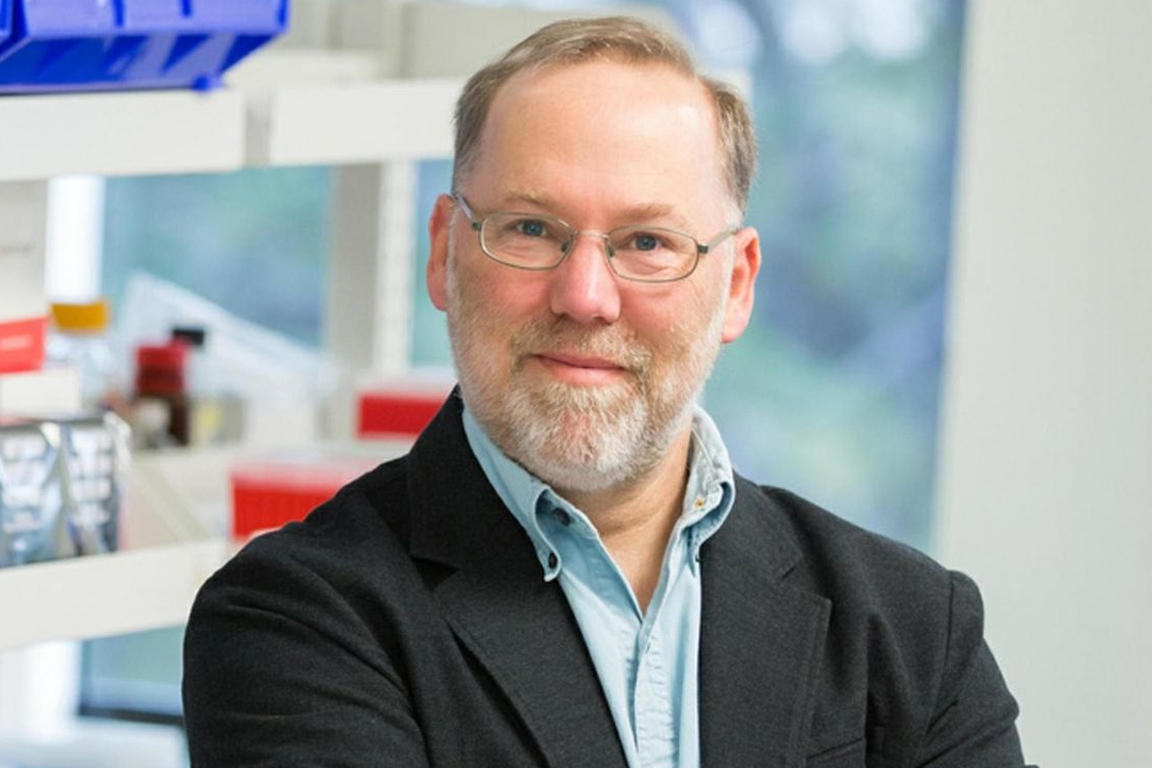
Bruin brilliance: UCLA alumnus Frederick Ramsdell wins the Nobel Prize
When Fred Ramsdell lost cellphone reception during a hiking trip deep in the Rocky Mountains, he had no idea history was calling. Twelve hours later, he emerged from the wilderness to discover he’d won the 2025 Nobel Prize in physiology or medicine.
-
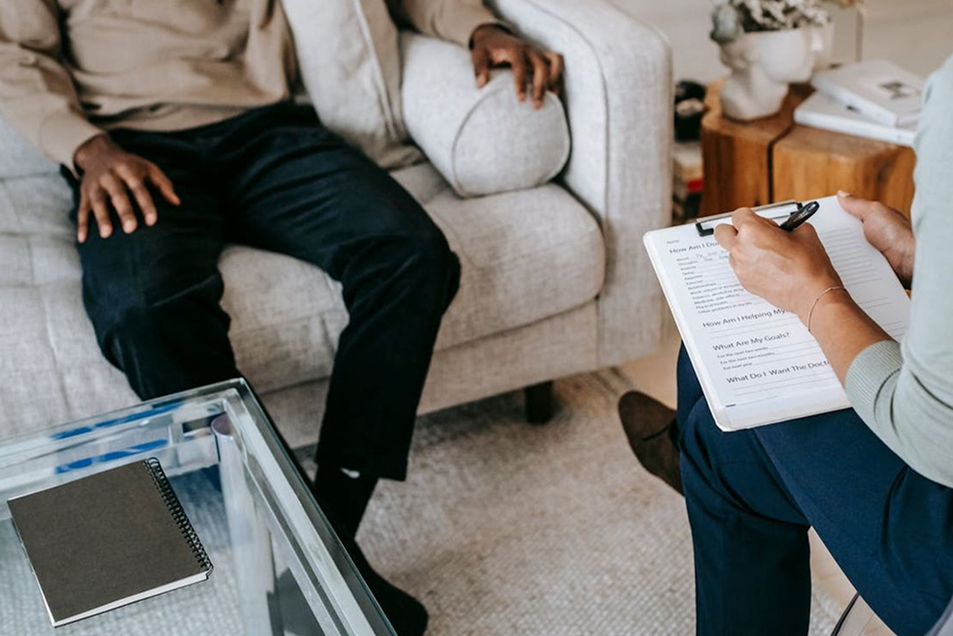
Improving lives for people exposed to trauma
UCLA researchers are finding new treatments to ease the physical ailments caused by post-traumatic stress disorder. Their studies show that addressing the mental effects of trauma early on may help reduce risk of one such PTSD-linked complication: cardiovascular disease.
-
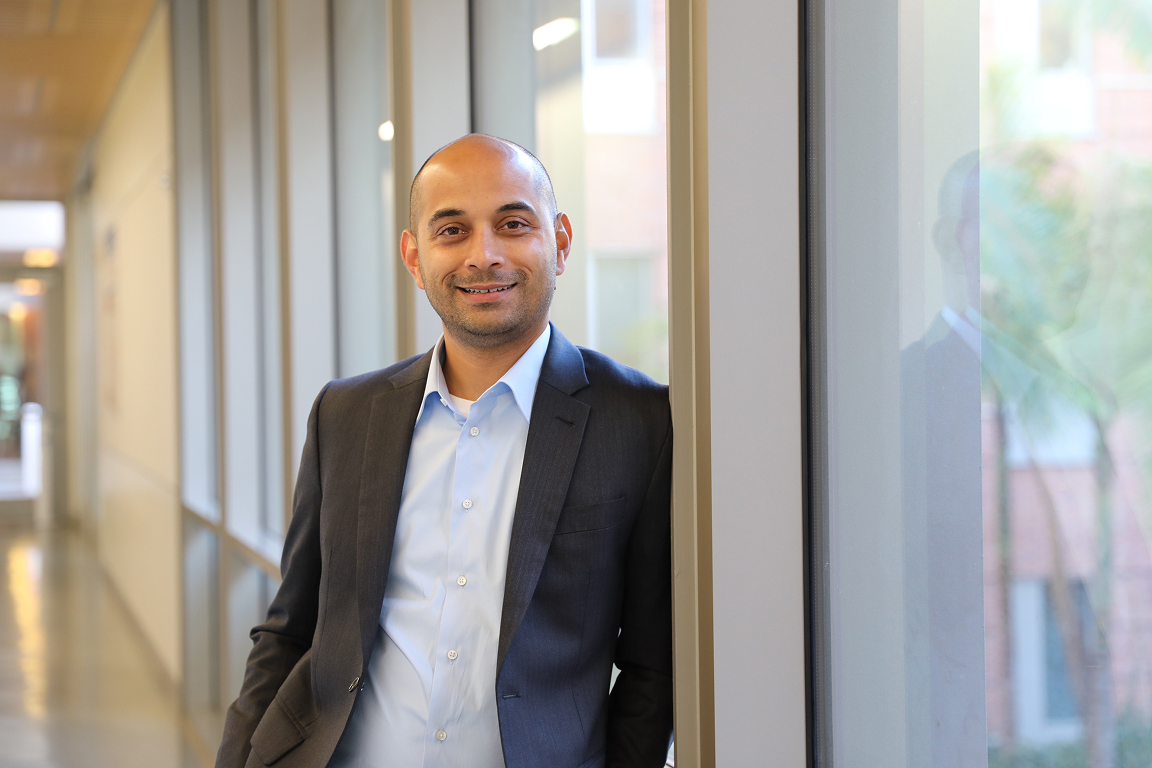
Curbing climate change, from land to sea
For Gaurav Sant, a third-generation civil engineer, humanity has never faced a greater challenge than climate change. With the window to claw back carbon emissions closing fast, Sant and his colleagues are racing against time to turn scientific research into real-world impact.
-

Better treatments for infertility
UCLA reproductive scientist Amander Clark is advancing infertility treatments by studying how stem cells develop into egg and sperm precursors, aiming to create functional reproductive cells in the lab.
-
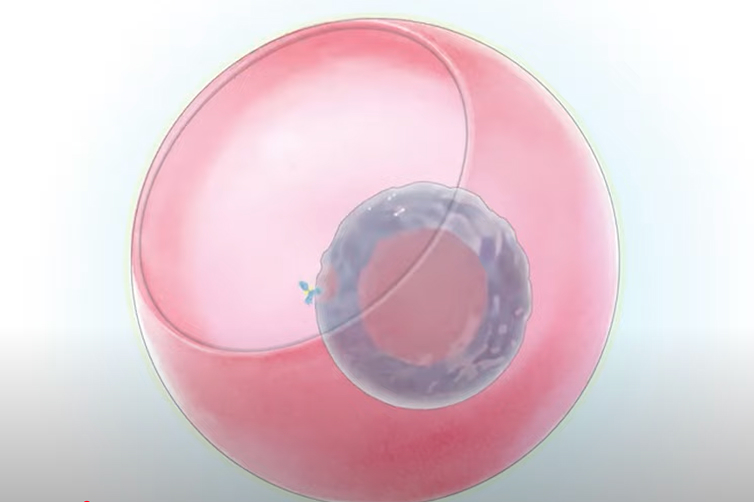
Engineering discoveries into solutions at the tiniest scales
For bioengineer Dino Di Carlo, invention is inseparable from practice. A professor at the UCLA Samueli School of Engineering, he moves fluidly between the worlds of discovery, translation and entrepreneurship — and back again.
-
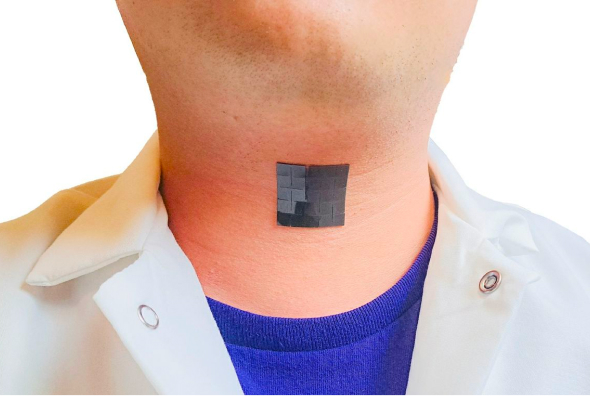
The lives and policies behind the data
Martha Bailey, a UCLA economic historian, leads LIFE-M, a groundbreaking data project that links birth, marriage, death, and census records across four generations to study how economic, educational, health, and environmental factors have shaped American lives since the 20th century.
-
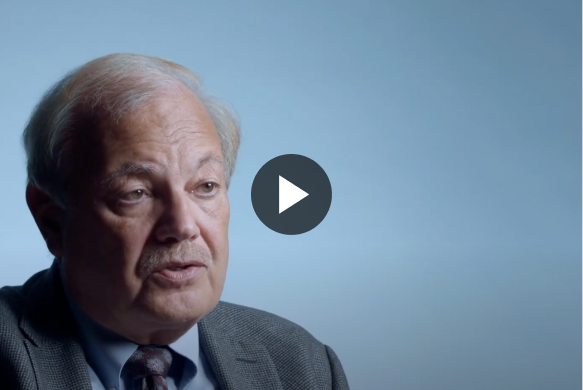
Researchers make progress toward a ‘pill’ for stroke recovery
Imagine a medicine that could help your brain heal after a stroke — without the grueling hours of physical therapy. That’s the promise of a new discovery by UCLA researchers who have identified a drug candidate that successfully mimics the effects of stroke rehabilitation in mice.
-

What’s the trick to aging well?
Castel and an international team of psychology researchers have shown that curiosity doesn’t have to fade with age — certain types of curiosity can persist into later life and actually increase. And better yet, they say, older adults who maintain their curiosity and are eager to learn new things relevant to their interests may be able to offset or even prevent cognitive decline and Alzheimer’s disease.
-

The true cost of abandoning science
What happens when the government turns its back on scientific research? UCLA’s Steven Furlanetto, a professor of physics and astronomy who studies ancient galaxies, powerfully and eloquently addressed this question in a recent opinion column for the Los Angeles Times.
-

A ‘miracle’ drug for leukemia
In 1995, Melvin Mann, a major in the U.S. Army and the father of an 8-year-old daughter, was diagnosed with a rare and deadly blood cancer called chronic myelogenous leukemia. Unable to find a suitable bone marrow donor, he was told he had only a few years to live.
-

Eating fish — without the fear of mercury
UCLA and UC San Diego researchers, funded by the National Science Foundation, have developed a probiotic that detoxifies methylmercury, a toxic form of mercury found in seafood like bluefin tuna. This could benefit pregnant women and those with fish-heavy diets by reducing risks of mercury poisoning and birth defects.
Stand Up for UCLA Research
Federal research funding to UCLA remains at risk. Life-saving care, educational access and technological and economic progress hang in the balance.
We need your support. Funding from the NSF and NIH has been restored for the time being, but there’s still more work to do. The future of world-changing research at one of our nation’s leading public universities is at stake. Together, we can stand up for UCLA.
UCLA Research in the News
-
Life-saving treatment for children with rare disease
What was once unimaginable, is now a reality. The New York Times reports on the life-saving, life-changing gene therapy treatment for children with ADA-SCID, developed by UCLA’s Dr. Donald Kohn. The new treatment reduces the need for chemotherapy and has fewer long-term side effects compared to bone-marrow transplants.
New York Times -
Planetary defense system developed by UCLA astronomer could save human race
Science profiled UCLA astronomer Amy Mainzer, the lead scientist developing the planetary defence system NEO, or Near-Earth Object Surveyor, whose mission is no less than protect the human race from a deadly hit by asteroids orbiting in space. The asteroids are sometimes called city killers given a direct strike on a large metropolis could unleash the destruction of 300 million tons of TNT.
Science Magazine -
UCLA student researchers analyze autopsies to bring accountability to in custody deaths
Working with community activists, Professor Terence Keel and his team of student researchers have analyzed thousands of autopsies, coroner reports and other documents, working to bring accountability to and stop in-custody deaths in Los Angeles County and nationwide. “[T]here is a perception that [this] is a Black and brown problem,” Keel told LAist. “But when you look at the data, look at the raw numbers, white Americans are the largest group in the nation being killed by police. ... And when you look at all of the people who are dying in custody, every single demographic in [the U.S.] is represented.”
LAist
Innovation Starts Here
UCLA discoveries and scholarship drive innovation that keeps our country healthy and safe. Our research propels medical breakthroughs, fuels economic growth, strengthens national security and enhances global competitiveness — all vital national priorities. Americans’ work, health and future depend on the groundbreaking work we do.
Nearly 260 companies have licensed technologies developed here. UCLA faculty created more than 280 inventions in the 2024 fiscal year alone. Technology begins with research. Stopping this research would be devastating for UCLA and for Americans across the nation.
-
Bruin legend Kareem Abdul-Jabbar speaks from the heart about UCLA’s impact on his life, career and health
-

-
I participated in research as an undergraduate at UCLA and now work at a science-based environmental nonprofit. The work that we engaged in was integral to the work I do now to protect Los Angeles' coastline from extractive use... Science is integral to ensuring our society moves forward and is powered by the process of curiosity and inquiry.”
Zoë Collins
UCLA Alum -

-
How to assign a value to the seven years of additional, precious life my now deceased husband and I shared after he was diagnosed at UCLA with advanced melanoma thanks to Dr. Anthony Riba's ground-breaking research? Beyond dollars and cents.”
Laurie Levin
UCLA Alum -

-
I was a member of the Center for Research Excellence C.A.R.E. program at UCLA as an undergraduate. It was my first opportunity to start working in the lab - the stepping stone into a research career. Now, I am a successful, internationally known scientist in Switzerland at Empa.”
Caroline Reyes
UCLA Alum -

What’s Your UCLA Research Story?
Have UCLA and our research benefited you or someone you love? Tell your story on social media using the hashtag #ResearchPowersProgress, or share it with us.

